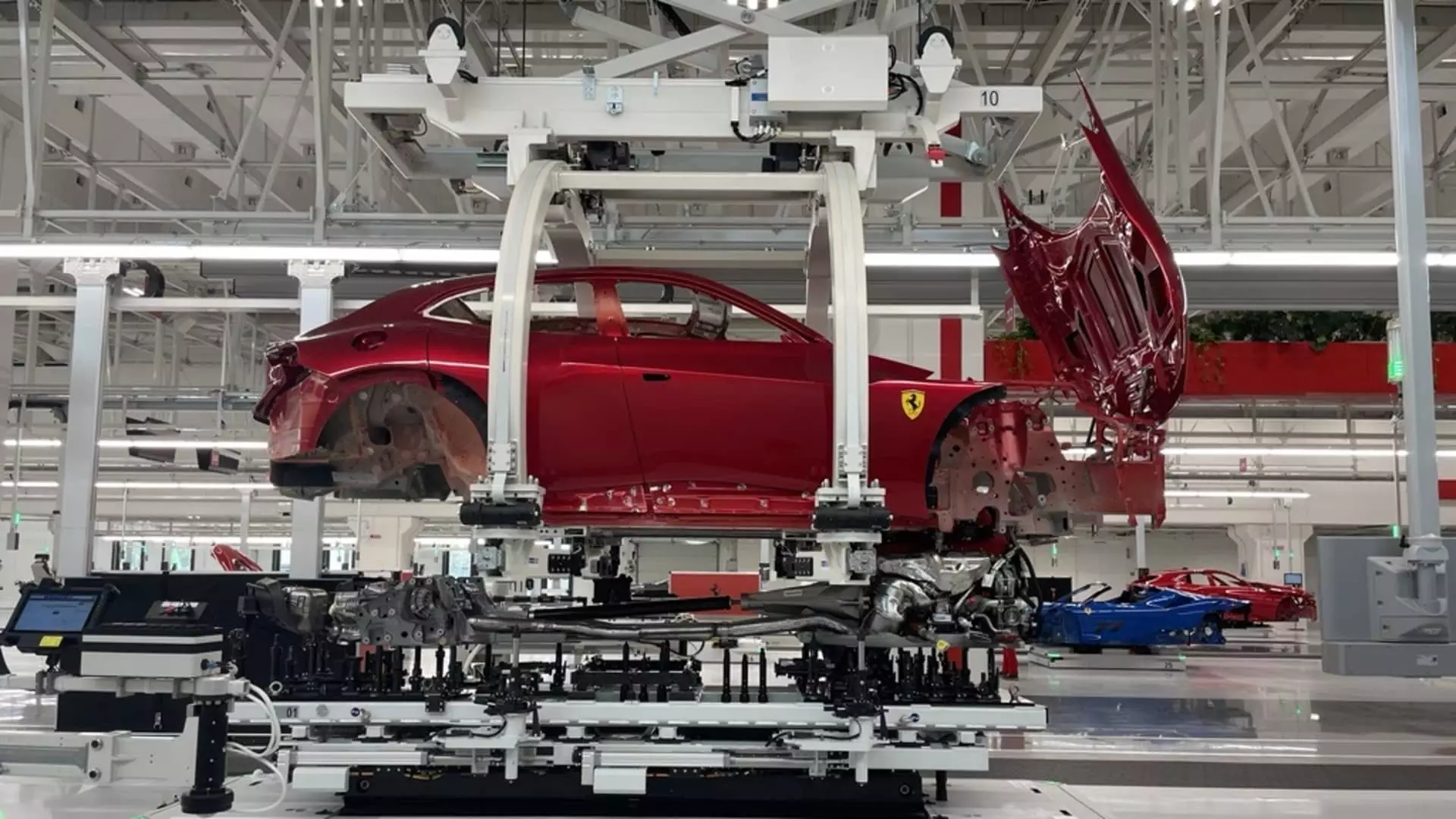Ferrari, the iconic luxury automaker known for its roaring combustion engines, is making a bold move towards an all-electric model. While the electric Ferrari won’t be available for over a year, early tests indicate that it embodies the driving traits and emotion that define a true Ferrari. According to Ferrari CEO Benedetto Vigna, the final judgment will ultimately rest with the clients themselves. The recent opening of the company’s new E-Building in Maranello, Italy has provided more people with the opportunity to test drive the electric Ferrari, and the response has been positive. Vigna emphasizes that the emotional experience remains a defining characteristic of a Ferrari, and having driven the all-electric model himself, he attests to feeling that familiar emotion.
One of the key concerns surrounding an electric Ferrari is the absence of the roaring engine sound that is synonymous with the brand. Ferrari powertrains are celebrated for their symphony of sounds, from roars and rumbles to pops and high-pitched whines. In contrast, electric motors operate silently. Vigna assures that Ferrari’s power acoustics will always remain authentic, eliminating the use of fake audio programs to recreate the sound of a combustion engine. While the electric engine may not produce the same noise, Vigna suggests that there is a unique way to allow it to play its own distinct tune. He underlines that while engine sound plays a role in the emotional experience of driving a Ferrari, it is not the sole factor. The overall driving experience involves engaging all senses, from sight and sound to touch. Linear acceleration, lateral acceleration, braking, and even gearbox changes contribute to creating a unique emotional connection with the car.
Despite the shift towards an all-electric model, Ferrari remains committed to providing clients with a choice between internal combustion engines, hybrids, and the new electric model. Vigna stresses that Ferrari will remain “technology neutral,” allowing customers to choose the powertrain that resonates with them. The construction of the new E-Building, which cost over 200 million euros and spans over 400,000 square feet, enables Ferrari to produce cars with any of the three powertrains in the same facility, enhancing efficiency and flexibility. Vigna affirms that the ultimate decision lies in the hands of the clients, acknowledging that while some may never opt for an electric Ferrari, others will eagerly embrace the new technology. The E-Building also positions Ferrari to better meet market demand, as the company produced fewer than 14,000 cars last year, with wait times for certain models extending up to three years. Vigna acknowledges that waiting is part of the Ferrari ownership experience, hinting at the exclusivity and allure associated with owning one of these coveted supercars.
Ferrari’s foray into the realm of electric vehicles marks a significant shift for the brand, known for its legacy of powerful combustion engines. The introduction of an all-electric model is a testament to Ferrari’s commitment to innovation and providing customers with a diverse range of options. While the absence of the traditional engine sound may raise concerns among purists, Vigna’s assurance of an authentic driving experience emphasizes that the emotional connection with a Ferrari goes beyond auditory stimulation. As Ferrari prepares for the launch of its electric model in 2025, the automotive world eagerly anticipates the evolution of this legendary marque into the realm of electrification.

